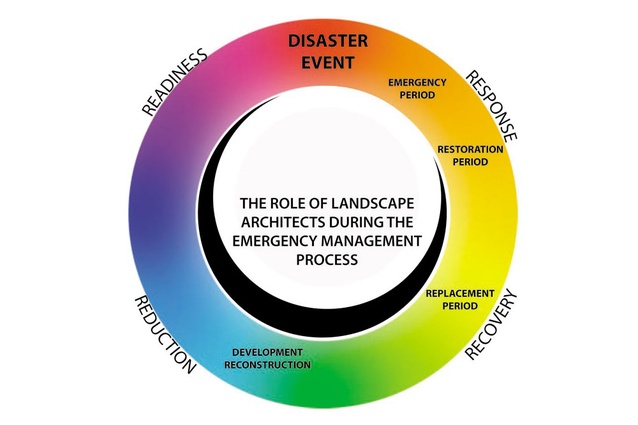Disaster by design
What is, or could be, the role of landscape architects in earthquake recovery?
February 22nd is a date many will remember as one of those life-changing days, where one’s future path takes an unexpected turn down a very strange and bumpy road. I will admit I was one of the luckier individuals whose path has been bumpy but a bit exciting at the same time. Understanding and analysing the past, present and potential role of landscape architects in earthquake recovery became the focus of my attention for the months following the February earthquake. I now have the earthquakes to thank (or blame?) for inspiring me to undertake a complex, broad and incredibly interesting research topic.
While there is a limited body of landscape architecture literature that focuses specifically on the topic of disaster management, existing arguments emphasise that landscape architects don’t have to steer far off the track of general practice and theory to validate themselves in critical roles of disaster recovery. Even still, it is frequently emphasised that in many disaster recovery cases, landscape architects and related specialists are greatly under-utilised in both pre-disaster mitigation and post-disaster recovery across all scales. I wanted to find out if this was in fact the experience in Canterbury.
The overarching purpose of the research was to explore and provide insight to the current and potential role of landscape architects in the earthquake recovery period in Canterbury. A qualitative research approach involved a comprehensive literature review; identification of relevant good practice case studies; undertaking participatory action research to build a case study of the Canterbury recovery; and carrying out an online survey to establish an industry perspective on the topic.
Survey data confirmed that landscape architects in Canterbury have a relatively high level of involvement in disaster recovery activities compared to the perceived level and to many disaster recovery cases worldwide. Here, landscape architects are most frequently engaged in roles of master planning for new and existing communities, and in volunteer roles of temporary landscape design at the local/site scale. They are still mostly absent from regeneration plans addressing the broader regional scale.
While there is a valuable selection of international case study examples in which landscape architects have had a critical role in recovery (from sustainable neighbourhood redevelopments organised by Make It Right Trust landscape architects in New Orleans, to damage assessment surveys carried out by the Japanese Institute of Landscape Architects), no single disaster matching the scale and complexity of the Canterbury earthquakes has demonstrated the full potential of their role in the recovery period. It is concluded that this is most likely to be due to the typical absence of landscape architects and other design specialists at critical decision-making tables that influence the process, priorities and programme for recovery.
Christchurch has been very fortunate as several innovative initiatives have sparked a movement of regenerating vacant demolition sites as temporary community spaces. This concept of an intermediate landscape is a unique aspect of recovery that I believe is worth expanding in landscape architecture research and practice. In recovery situations, landscape architects should be embracing the opportunity to become specialists in the innovative design, management and idea of a reusable intermediate landscape. Increasing the scale of the concept and introducing the basic principles to a variety of other recovery strategies could potentially relieve some of the tension that exists between speed and deliberation, and prioritising rebuild budgets between short and long-term recovery. French landscape architect Michel Desvigne strongly supports this argument in his theory of perceiving landscape architecture as a kind of “living art form that is more about cultivation, process and change over time, than it is with more familiar landscape architecture practices.” (James Corner commenting on Desvigne’s work in Basdevant, 2009). Promoting the concept of an intermediate landscape as a solution to both short and long term recovery problems is a potential direction for landscape architects to approach disaster recovery in the future.
Through continuing to be persistent and proactive about getting involved, raising awareness of the discipline and it’s spectrum of practice (particularly to the emergency management discipline), and taking the time to evolve as specialists in aspects of recovery, it can be expected that landscape architects will continue to evolve as critical players in the long-term success of Canterbury’s future.










